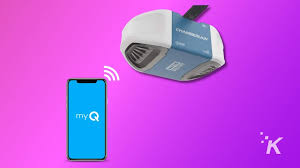Garage door sensors are a crucial safety feature that prevents accidents and ensures smooth operation. If you’re wondering, “Should both sensors on garage door be green?”, you’re not alone. In this guide, we’ll explore how garage door sensors work, what different light colors indicate, and how to troubleshoot common issues. We will also cover detailed step-by-step troubleshooting tips, common problems, and best practices for keeping your garage door sensors in perfect working condition.

Should Both Sensors on Garage Door Be Green? A Complete Guide 2025
How Do Garage Door Sensors Work?
Garage door sensors use an infrared beam to detect obstacles in the door’s path. They are installed on either side of the garage door, typically 6 inches above the ground. When the beam is interrupted, the garage door opener receives a signal to stop closing and reverse direction, preventing accidents and injuries.
Main Components of a Garage Door Sensor System
- Sending Sensor (Transmitter): Emits the infrared beam.
- Receiving Sensor: Detects the beam and sends confirmation to the opener.
- Indicator Lights: Show the working status of the sensors.
- Wiring: Connects the sensors to the garage door opener.
What Do the Green and Yellow Lights on Garage Door Sensors Mean?
Most garage door sensor systems have two lights:
- Green Light – Indicates that the sensor is powered and working correctly.
- Yellow or Amber Light – Found on the sending sensor, indicating it is transmitting the infrared beam.
✅ Both sensors should be properly aligned for the garage door to function correctly.
Should Both Garage Door Sensors Be Green?
Yes, in most cases, both sensors should show a solid green light. Here’s what it means:
- If both lights are green, the sensors are aligned, powered, and working as expected.
- If one or both lights are off or blinking, there might be an issue that needs troubleshooting.
Common Garage Door Sensor Issues and Fixes
If one or both sensors are not green, it could be due to various reasons. Here’s a troubleshooting guide:
1. Misalignment of Sensors
🔹 Issue: The sensors must face each other perfectly. If they are misaligned, the garage door will not close.
🔹 Fix: Slightly adjust the sensors and ensure the lights turn green.
2. Dirty or Obstructed Sensors
🔹 Issue: Dirt, dust, or cobwebs can block the sensor’s beam.
🔹 Fix: Clean the sensors with a soft cloth and remove any obstructions.
3. Wiring Problems
🔹 Issue: Loose or damaged wires can disrupt sensor operation.
🔹 Fix: Check the wires and connections for signs of wear or disconnection.
4. Sunlight Interference
🔹 Issue: Direct sunlight can interfere with the infrared beam.
🔹 Fix: Use a sun shield or slightly reposition the sensors to reduce glare.
5. Power Supply Issues
🔹 Issue: Sensors require a consistent power source to function properly.
🔹 Fix: Ensure the sensors are plugged into a working outlet or check the circuit breaker.
6. Faulty Sensors
🔹 Issue: If troubleshooting doesn’t work, one of the sensors might be faulty.
🔹 Fix: Replace the defective sensor with a new one.
How to Reset Garage Door Sensors
If troubleshooting doesn’t fix the issue, try resetting the garage door sensors:

- Disconnect the garage door opener from power.
- Wait for 30 seconds and plug it back in.
- Align the sensors and check the lights.
- Test the door operation.
How to Know If Your Garage Door Sensors Are Bad
Here are some signs that your garage door sensors might need replacement:
❌ The garage door won’t close even after cleaning and alignment. ❌ The sensor lights remain off or keep flickering. ❌ You hear clicking sounds, but the door does not move. ❌ The door reverses immediately after hitting the floor.
If you experience any of these problems, it might be time to replace the sensors.
How to Replace Garage Door Sensors
If your sensors are faulty, follow these steps to replace them:
- Purchase compatible sensors for your garage door opener model.
- Turn off the power to avoid electrical hazards.
- Remove the old sensors by unscrewing them from their mounts.
- Connect the new sensors using the existing wiring.
- Align the sensors so the indicator lights turn green.
- Secure the sensors and test the garage door operation.
Best Practices for Garage Door Sensor Maintenance
To ensure your sensors work properly for years, follow these maintenance tips:
✅ Clean the sensors every few months. ✅ Check for loose wires and secure connections. ✅ Protect the sensors from sunlight interference. ✅ Ensure proper alignment after any impact or movement. ✅ Test the garage door regularly to detect early issues.
Conclusion
So, should both sensors on a garage door be green? Yes! If your sensors are working properly, one sensor will have a steady green light, and the other (sending unit) may have a yellow or amber light. If one or both lights are off, blinking, or not responding, try the troubleshooting steps mentioned above.
A well-functioning garage door sensor ensures safety and smooth operation. Regular cleaning, proper alignment, and timely replacement of faulty sensors will keep your garage door system running efficiently.
🚪 Is your garage door sensor not working? Try these solutions and let us know your experience in the comments!

hello friends
my name is Sumit kumar. I am the owner of this website and I share only garage door and lift master information and only informational posts on my website. And I have written this post myself and have given you only a good guide and information.
1 thought on “Should Both Sensors on Garage Door Be Green? A Complete Guide 2025”